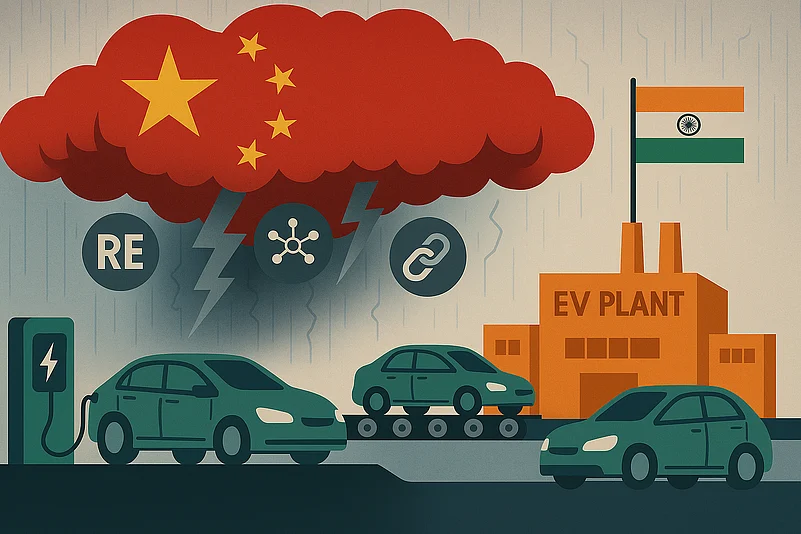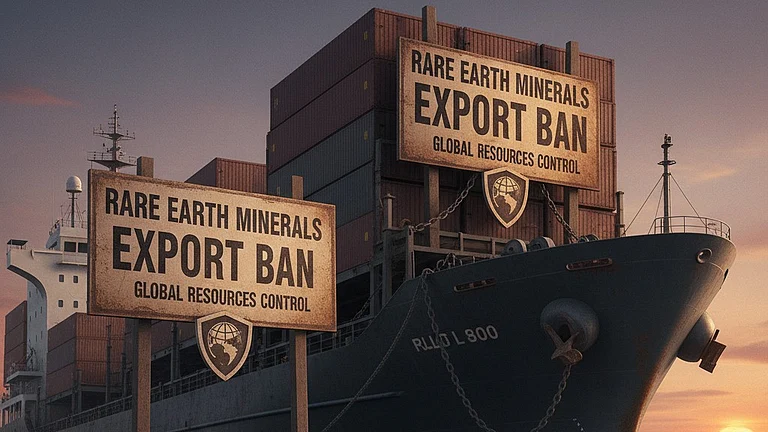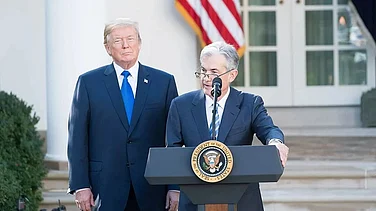India’s two-wheeler giant Bajaj Auto issued a public SOS on May 30 during its quarterly earnings call. The Rajiv Bajaj-led company, which reported a 10% year-on-year decline in net profit for the quarter ended March 31, 2025, warned of "a dark cloud on the horizon" for the Indian auto industry.
The concern centres around a new Chinese regulatory policy on the supply of rare earth magnets, which came into effect on April 4. The policy requires exporters to obtain licences and submit detailed end-use documentation to ensure the materials are not used for military or restricted purposes.
“I must point out a dark cloud on the horizon in terms of the continued supply of rare earth magnets from China, which are essential components of high-performance EV motors,” Bajaj Auto’s Executive Director Rakesh Sharma told analysts. He added that while a process has finally been defined for non-military end-use declarations, “We have yet to see the completion of the process. Any delay or disruption will start to seriously impact production by July, so we are hoping that approvals are secured by exporters in the coming weeks based on declarations by our vendors.”
Though Bajaj Auto publicly raised the alarm, it is not alone in its concerns. According to Reuters, India’s auto industry has warned the Narendra Modi-led government of a possible production halt starting late May or early June due to rare earth magnet shortages, with shipments stuck at Chinese ports since April 4.
In a meeting with the commerce ministry last week, the Society of Indian Automobile Manufacturers (SIAM) reportedly urged government intervention, citing dangerously low inventories. On May 31, The Economic Times reported that a joint delegation from SIAM and the Automotive Component Manufacturers Association (ACMA) plans to meet senior Chinese officials to expedite the necessary clearances.
The outcome of that meeting is not yet known. An email sent to the Chinese Embassy in India went unanswered at the time of publication.
What Are Rare Earth Metals and Why Is China So Dominant?
Rare earth elements (REEs) refer to a group of 17 metals—15 from the lanthanide series plus scandium and yttrium—that are crucial for the manufacturing of EV motors, electronics, medical devices, wind turbines, aircraft engines, and military systems like missiles and radar. Despite their name, REEs are relatively abundant in the Earth's crust. However, their extraction and processing are difficult and costly.
China dominates the supply chain, accounting for around 70% of global mining and nearly 90% of refined output, according to a Jefferies report.
The largest end-use of REEs is in permanent magnets, which accounted for around 44% of global demand in 2022. Neodymium is a key ingredient in neodymium-iron-boron (NdFeB) magnets—some of the strongest permanent magnets available. Other rare earths like dysprosium and terbium are added to enhance their performance at high temperatures. Praseodymium boosts coercivity, helping magnets resist demagnetisation.
“These magnets are widely used in EVs for their high magnetic strength, compact size, light weight, and high coercivity. Alternatives like iron nitride and ferrite magnets exist but are heavier, produce lower torque, and are more prone to demagnetisation,” Jefferies noted.
Global reserves of REEs are estimated at about 90 million tonnes, while production in 2024 was around 390,000 tonnes. However, most reserves are spread thinly across regions and are challenging to extract. Besides China, countries like Malaysia (5–8%) and Vietnam (about 2%) contribute small amounts of refined output.
What Is China's New Policy?
On April 4, 2025, China’s Ministry of Commerce and General Administration of Customs issued Announcement 18, placing export controls on specific medium and heavy rare earth materials. China cited national security and international non-proliferation commitments as reasons.
However, many see it as retaliation against trade barriers imposed by US President Donald Trump after his so-called “Liberation Day” on April 4.
For Indian importers, the new rules require self-declaration of end use by vendors, certification from relevant Indian ministries and the Chinese Embassy in India, and dual-level approval in China—from the provincial government and the Ministry of Commerce.
According to Bajaj Auto’s management, about 30 applications have been submitted, but approvals are still pending at the Chinese end.
Following Bajaj Auto’s warning, TVS Motor Managing Director Sudarshan Venu also raised concerns. He told CNBC-TV18 that China's export curbs could impact EV production by June or July, especially in the electric two-wheeler segment. He warned of output halts and possible price hikes and emphasised the urgent need to localise the EV supply chain to reduce dependence on China.
Earlier this month, Sona BLW Precision Forgings Limited, one of India’s key auto component makers, also stated that the global auto industry remains vulnerable to supply chain disruptions and China’s dominance in rare earth materials.
What Can India Do?
According to Reuters, India imported 460 tonnes of rare earth magnets in FY2024—mostly from China—and expects that number to rise to 700 tonnes (worth $30 million) this year.
Jefferies notes that importing fully built motors from China could be an interim solution. However, that would require OEMs to realign supply chains and obtain new homologation approvals, potentially affecting eligibility for the government’s Production-Linked Incentive (PLI) scheme due to lower domestic value addition.
"On the positive side, media reports suggest China has issued export permits to a few magnet producers, including Volkswagen’s suppliers, raising hopes that India might also see resolution soon,” the brokerage added.
At the Singularity Conference in Mumbai this April, Rajat Verma, Founder and CEO of LOHUM Cleantech, noted that India holds about 6% of global REE reserves but contributes only 0.25% to production.
“We have resources, but we aren’t doing much. India has a government-owned company—India Rare Earths Ltd.—but it hasn’t scaled up in 70 years,” Verma said. “China produces the best magnets today, though Japan once led. In India, REEs often come with uranium, which has policy restrictions. But a change in PPP (public-private partnership) policy for processing is likely.”


































